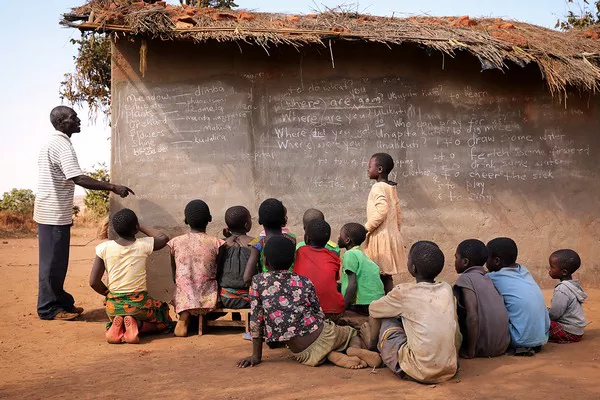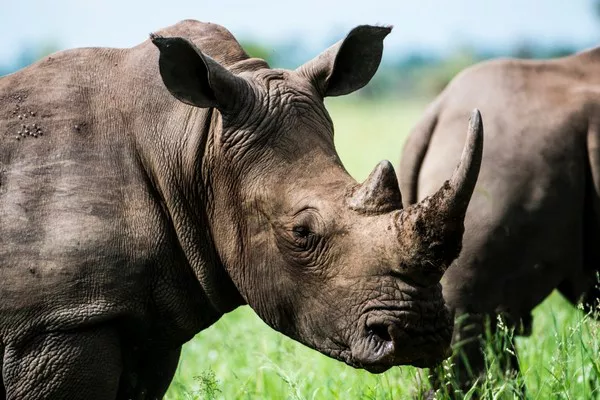Economic disparities persist on a global scale, with certain nations facing significant challenges in achieving sustainable development and prosperity. In this exploration, we delve into the 10 poorest countries in the world, examining their GDP per capita and the unique economic hurdles they face. Understanding the economic landscape of these nations is essential for fostering international cooperation and targeted interventions to uplift the lives of their citizens.
10 Poorest Countries in the World
1. Burundi
Situated in East Africa, Burundi consistently ranks among the world’s poorest countries. The landlocked nation faces challenges such as political instability, civil unrest, and high population density. Agriculture dominates the economy, but the sector is vulnerable to climatic changes and insufficient infrastructure.
The Gross Domestic Product per capita in Burundi was last recorded at 262.18 US dollars in 2022. The GDP per Capita in Burundi is equivalent to 2 percent of the world’s average. GDP per Capita in Burundi averaged 330.72 USD from 1960 until 2022, reaching an all time high of 447.74 USD in 1991 and a record low of 244.59 USD in 1961.
GDP per Capita in Burundi is expected to reach 273.98 USD by the end of 2023.
2. South Sudan
As the youngest country in the world, South Sudan gained independence in 2011, but its economic journey has been marred by conflict and political instability. A significant portion of the population relies on subsistence agriculture, and oil exports constitute a crucial source of revenue.
The Gross Domestic Product per capita in South Sudan was last recorded at 1071.78 US dollars in 2015. The GDP per Capita in South Sudan is equivalent to 8 percent of the world’s average. GDP per Capita in South Sudan averaged 1685.89 USD from 2008 until 2015, reaching an all time high of 2302.52 USD in 2010 and a record low of 1071.78 USD in 2015.
GDP per Capita in South Sudan is expected to reach 1067.00 USD by the end of 2023. In the long-term, the South Sudan GDP per capita is projected to trend around 1087.00 USD in 2024 and 1108.00 USD in 2025.
3. Malawi
Landlocked in Southeast Africa, Malawi faces challenges such as widespread poverty, food insecurity, and health crises, including the impact of HIV/AIDS. Agriculture is the backbone of Malawi’s economy, but the nation is vulnerable to external shocks such as weather fluctuations and global commodity price changes.
The Gross Domestic Product per capita in Malawi was last recorded at 554.20 US dollars in 2022. The GDP per Capita in Malawi is equivalent to 4 percent of the world’s average. GDP per Capita in Malawi averaged 410.72 USD from 1960 until 2022, reaching an all time high of 573.40 USD in 2019 and a record low of 259.24 USD in 1963.
GDP per Capita in Malawi is expected to reach 564.73 USD by the end of 2023. In the long-term, the Malawi GDP per capita is projected to trend around 578.85 USD in 2024 and 598.53 USD in 2025.
4. Niger
Located in West Africa, Niger struggles with high population growth, food insecurity, and frequent droughts. A significant portion of the population relies on subsistence agriculture, and the country faces challenges related to infrastructure and education. Addressing demographic challenges and promoting economic diversification are essential components of Niger’s development agenda.
The Gross Domestic Product per capita in Niger was last recorded at 545.46 US dollars in 2022. The GDP per Capita in Niger is equivalent to 4 percent of the world’s average. GDP per Capita in Niger averaged 544.81 USD from 1960 until 2022, reaching an all time high of 867.08 USD in 1965 and a record low of 389.08 USD in 2000.
GDP per Capita in Niger is expected to reach 578.19 USD by the end of 2023.
5. Mozambique
Despite its rich natural resources, Mozambique faces economic challenges rooted in historical conflicts and natural disasters. The nation has made strides in economic reforms, but issues such as corruption and political instability hinder progress. Mozambique’s GDP per capita is estimated at $1,204, reflecting the complexities of balancing economic development with environmental sustainability and social equity.
The Gross Domestic Product per capita in Mozambique was last recorded at 580.73 US dollars in 2022. The GDP per Capita in Mozambique is equivalent to 5 percent of the world’s average. GDP per Capita in Mozambique averaged 363.93 USD from 1980 until 2022, reaching an all time high of 604.01 USD in 2018 and a record low of 165.93 USD in 1986.
GDP per Capita in Mozambique is expected to reach 609.77 USD by the end of 2023. In the long-term, the Mozambique GDP per capita is projected to trend around 643.30 USD in 2024 and 681.90 USD in 2025.
6. Democratic Republic of the Congo (DRC)
The Democratic Republic of the Congo, located in Central Africa, is rich in minerals and natural resources. However, historical conflicts, political instability, and underdeveloped infrastructure have hampered economic growth.
The Gross Domestic Product per capita in Congo was last recorded at 528.79 US dollars in 2022. The GDP per Capita in Congo is equivalent to 4 percent of the world’s average. GDP per Capita in Congo averaged 782.48 USD from 1960 until 2022, reaching an all time high of 1362.29 USD in 1974 and a record low of 322.44 USD in 2002.
GDP per Capita in Congo is expected to reach 571.09 USD by the end of 2023.
7. Central African Republic (CAR)
Landlocked in Central Africa, the Central African Republic faces ongoing conflicts, political instability, and humanitarian crises. CAR’s economy relies heavily on subsistence agriculture, and the nation confronts challenges related to infrastructure development and access to basic services.
The Gross Domestic Product per capita in Central African Republic was last recorded at 362.57 US dollars in 2022. The GDP per Capita in Central African Republic is equivalent to 3 percent of the world’s average.
GDP per Capita in Central African Republic is expected to reach 369.82 USD by the end of 2023.
8. Eritrea
Located in the Horn of Africa, Eritrea faces economic challenges exacerbated by political isolation and limited access to international markets. The nation has made efforts to diversify its economy, but issues such as mandatory national service and restrictions on political freedoms impact economic development.
The Gross Domestic Product per capita in Eritrea was last recorded at 702.40 US dollars in 2011. The GDP per Capita in Eritrea is equivalent to 6 percent of the world’s average. GDP per Capita in Eritrea averaged 751.06 USD from 1992 until 2011, reaching an all time high of 843.99 USD in 1998 and a record low of 601.16 USD in 1992.
9. Chad
Landlocked in North Central Africa, Chad grapples with economic challenges stemming from political instability, armed conflicts, and a reliance on agriculture and oil. Despite possessing significant oil reserves, the nation faces difficulties in translating this resource wealth into widespread economic development.
The Gross Domestic Product per capita in Chad was last recorded at 590.31 US dollars in 2022. The GDP per Capita in Chad is equivalent to 5 percent of the world’s average. GDP per Capita in Chad averaged 518.84 USD from 1960 until 2022, reaching an all time high of 777.94 USD in 2014 and a record low of 341.19 USD in 1980.
GDP per Capita in Chad is expected to reach 610.38 USD by the end of 2023.
10. Liberia
Located on the West African coast, Liberia has faced challenges related to the aftermath of civil wars and the Ebola epidemic. The nation is rebuilding its infrastructure and fostering economic diversification, but issues such as corruption and inadequate education infrastructure pose hurdles.
The Gross Domestic Product per capita in Liberia was last recorded at 646.50 US dollars in 2022. The GDP per Capita in Liberia is equivalent to 5 percent of the world’s average. GDP per Capita in Liberia averaged 648.79 USD from 2000 until 2022, reaching an all time high of 771.23 USD in 2002 and a record low of 534.45 USD in 2003.
Conclusion
Examining the economic landscapes of the 10 poorest countries in the world offers insights into the multifaceted challenges these nations confront on their paths to development. From political instability and conflicts to issues of infrastructure and education, each country faces a unique set of hurdles. Understanding the context and complexities of their economic struggles is essential for formulating targeted interventions and fostering international cooperation to uplift these nations and improve the lives of their citizens.
As the global community works towards sustainable development goals, addressing the specific needs of the world’s poorest countries becomes paramount. By promoting inclusive economic growth, strengthening institutions, and fostering international collaboration, there is an opportunity to create a more equitable and prosperous future for all.
You Might Be Interested In:


























